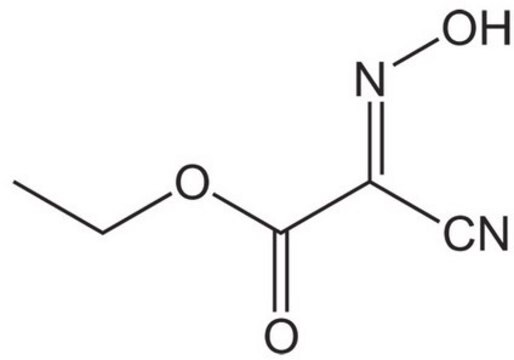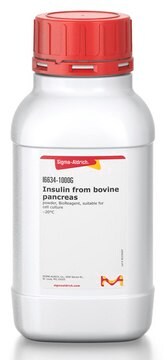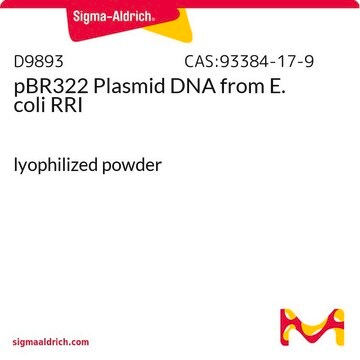추천 제품
설명
Powered by Eupheria Biotech
Quality Level
제품 라인
MISSION®
양식
lyophilized powder
esiRNA cDNA 표적 서열
TGATGCACGTGCTAAAGACCCAGATAGATGTCCCACTTTCATTGAAAGGAAGGATAATCGTGGAGGCCATAGAAGGCATGTGCTACTTACATGACAAAGGTGTGATACACAAGGACCTGAAGCCTGAGAATATCCTCGTTGATCGTGACTTTCACATTAAGATAGCCGATCTTGGTGTGGCTTCCTTTAAGACATGGAGCAAACTGACTAAGGAGAAAGACAACAAGCAGAAAGAAGTGAGCAGCACCACTAAGAAGAACAATGGTGGTACCCTTTACTACATGGCACCCGAACACCTGAATGACATCAATGCAAAGCCCACGGAGAAGTCGGACGTGTACAGCTTTGGCATTGTCCTTTGGGCAATATTTGCAAAAAAGGAGCCCTATGAGAATGTCATCTGTACTGAGCAGTTCGTGATCTGCATAAAATCTGGGAACAGGCCAAATGTAGAGGAAATCCTTGAGTACTGTCCAAGGGAGATCATCAGC
Ensembl | 마우스 수납 번호
NCBI 수납 번호
배송 상태
ambient
저장 온도
−20°C
유전자 정보
mouse ... RIPK1(19766) , Ripk1(19766)
일반 설명
MISSION® esiRNA are endoribonuclease prepared siRNA. They are a heterogeneous mixture of siRNA that all target the same mRNA sequence. These multiple silencing triggers lead to highly-specific and effective gene silencing.
For additional details as well as to view all available esiRNA options, please visit SigmaAldrich.com/esiRNA.
For additional details as well as to view all available esiRNA options, please visit SigmaAldrich.com/esiRNA.
법적 정보
MISSION is a registered trademark of Merck KGaA, Darmstadt, Germany
Storage Class Code
10 - Combustible liquids
Flash Point (°F)
Not applicable
Flash Point (°C)
Not applicable
Yoshiko Kaku et al.
Cellular signalling, 27(9), 1713-1719 (2015-05-26)
The present study investigated 1,2-diarachidonoyl-sn-glycero-3-phosphoethanolamine (DAPE)-induced cell death in malignant pleural mesothelioma (MPM) cells. DAPE reduced cell viability in NCI-H28, NCI-H2052, NCI-H2452, and MSTO-211H MPM cell lines in a concentration (1-100μM)-dependent manner. In the flow cytometry using propidium iodide (PI)
Yuichi Miki et al.
Lasers in medical science, 30(6), 1739-1745 (2015-06-26)
Photodynamic therapy (PDT) using photosensitizer induces several types of cell death, such as apoptosis, necrosis, and autophagy, depending on the PDT procedure, photosensitizer type, and cell type. We previously demonstrated that PDT using the photosensitizer talaporfin sodium (mono-L-aspartyl chlorine e6
W He et al.
Oncogene, 33(23), 3004-3013 (2013-07-09)
Killing cancer cells through the induction of apoptosis is one of the main mechanisms of chemotherapy. However, numerous cancer cells have primary or acquired apoptosis resistance, resulting in chemoresistance. In this study, using a novel chalcone derivative chalcone-24 (Chal-24), we
H Schoeneberger et al.
Oncogene, 34(31), 4032-4043 (2014-11-11)
Evasion of apoptosis in pediatric acute lymphoblastic leukemia (ALL) is linked to aberrant expression of inhibitor of apoptosis (IAP) proteins and dysregulated redox homeostasis, rendering leukemic cells vulnerable to redox-targeting therapies. Here we discover that inhibition of antioxidant defenses via
Pedram Kharaziha et al.
Oncotarget, 6(35), 37066-37082 (2015-09-30)
Autophagy is one of the main cytoprotective mechanisms that cancer cells deploy to withstand the cytotoxic stress and survive the lethal damage induced by anti-cancer drugs. However, under specific conditions, autophagy may, directly or indirectly, induce cell death. In our
자사의 과학자팀은 생명 과학, 재료 과학, 화학 합성, 크로마토그래피, 분석 및 기타 많은 영역을 포함한 모든 과학 분야에 경험이 있습니다..
고객지원팀으로 연락바랍니다.






